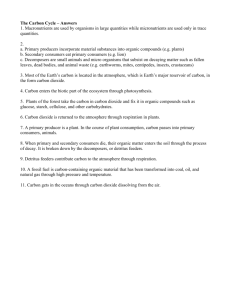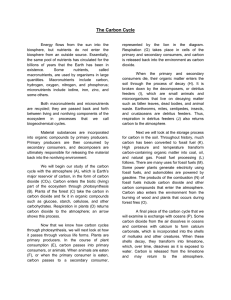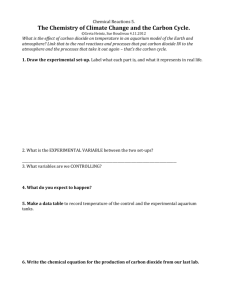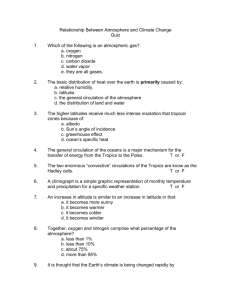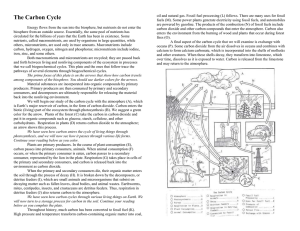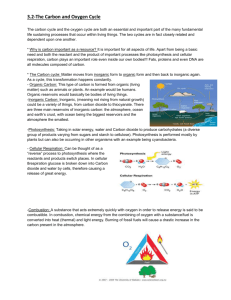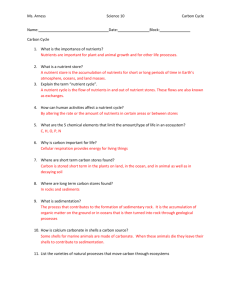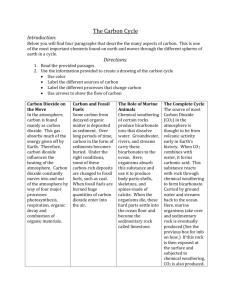Carbon Cycle Homework Answer Key
advertisement
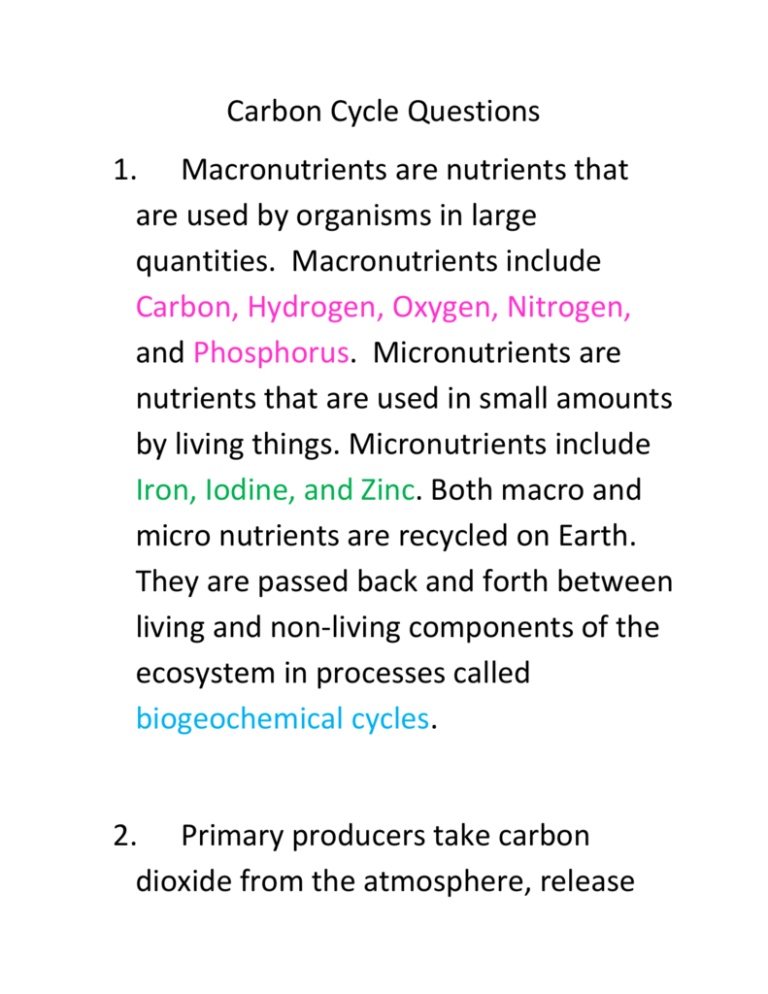
Carbon Cycle Questions 1. Macronutrients are nutrients that are used by organisms in large quantities. Macronutrients include Carbon, Hydrogen, Oxygen, Nitrogen, and Phosphorus. Micronutrients are nutrients that are used in small amounts by living things. Micronutrients include Iron, Iodine, and Zinc. Both macro and micro nutrients are recycled on Earth. They are passed back and forth between living and non-living components of the ecosystem in processes called biogeochemical cycles. 2. Primary producers take carbon dioxide from the atmosphere, release oxygen back into the atmosphere, and fix organic compounds (glucose, starch, cellulose). Secondary consumers eat producers, respirate, releasing energy in the body and carbon dioxide into the atmosphere. Decomposers break down dead producers, consumers, and waste. As they break these down they respirate returning carbon dioxide to the atmosphere and nutrients to the soil. 3. Most of Earth’s carbon is located in the atmosphere as a gas. 4. Carbon enters the biotic (living) part of an ecosystem through plants in photosynthesis. 5. Plants in a forest take in carbon dioxide and use it to form glucose, starch, and cellulose. 6. Carbon dioxide is returned to the atmosphere through respiration of plants, animals, and decomposers. 7. A primary producer is a plant that can produce its own food. 8. When a primary and secondary consumer die they decay. Decomposers break down their remains, returning nutrients to the soil, and releasing carbon dioxide through respiration. 9. Detritus feeders feed on dead bodies and waste. They respirate and return carbon dioxide to the air. 10. A fossil fuel is organic matter that has been buried deep in Earth and undergoes high pressure and temperatures for a very long time. Organic matter is anything that was once living. This means the organic matter contains carbon since it was once living. 11. Carbon in the air dissolves into oceans, and combines with calcium to form calcium carbonate. Calcium carbonate is incorporated into the shells of mollusks and other creatures. When these organisms die and decay, the shells transform into limestone, which, over time, dissolves as it sits in water. Carbon is released from the limestone and may return to the atmosphere through volcanic eruption (if trapped in rock) or diffusion (if in water).
